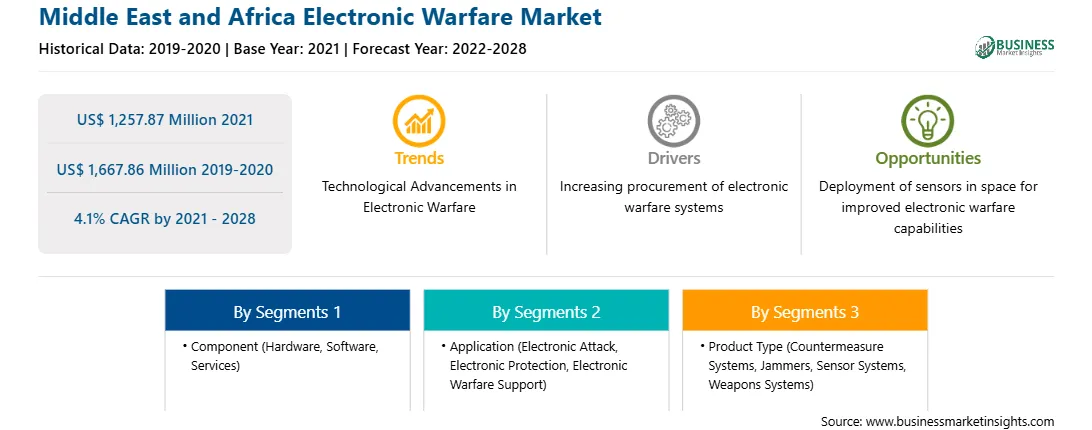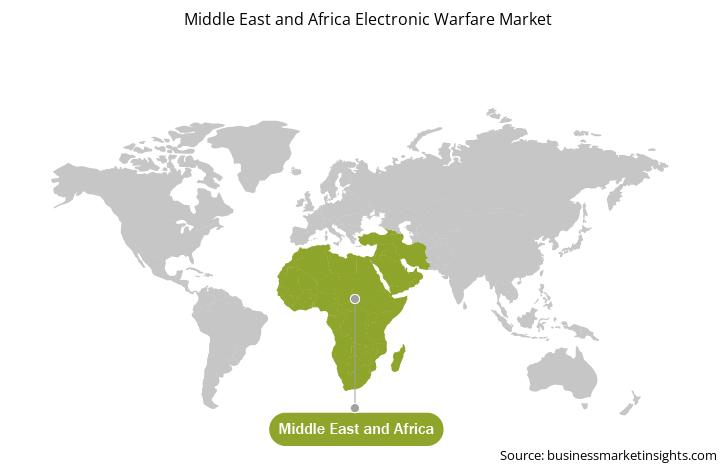Space is slowly becoming the new high ground for electronic warfare systems. Physical destruction, laser blinding, and electronic warfare are all likely to be used to deny the enemy the use of his satellites and protect the use of one's satellites for their force multiplier effect. There is a need to consider the best method to integrate space assets into military operations. Military forces no longer have the authority to restrict or refuse freedom of access to activities in space. In the global market, knowledge of space systems and the methods to defeat them are becoming increasingly available. Nations can possess or acquire the capability to disrupt or destroy an adversary's space systems by targeting their satellites in orbit, ground and space communication nodes, or ground nodes that command the satellites if they so desire. Anti-satellite weapons, denial and deception tactics, jamming, usage of tiny satellites, hacking, and nuclear detonation are a few examples of existing capabilities that can deny, disrupt, or physically destroy space systems and the terrestrial facilities that use and operate them. Satellite signal jamming technology is becoming advanced. So, deployment of sensors in space for improved electronic warfare capabilities is expected to fuel the market growth in the coming years.
With the new features and technologies, vendors can attract new customers and expand their footprints in emerging markets. This factor is likely to drive the MEA electronic warfare market in the coming years. The market is expected to grow at a good CAGR during the forecast period.
Strategic insights for the Middle East and Africa Electronic Warfare provides data-driven analysis of the industry landscape, including current trends, key players, and regional nuances. These insights offer actionable recommendations, enabling readers to differentiate themselves from competitors by identifying untapped segments or developing unique value propositions. Leveraging data analytics, these insights help industry players anticipate the market shifts, whether investors, manufacturers, or other stakeholders. A future-oriented perspective is essential, helping stakeholders anticipate market shifts and position themselves for long-term success in this dynamic region. Ultimately, effective strategic insights empower readers to make informed decisions that drive profitability and achieve their business objectives within the market.

| Report Attribute | Details |
|---|---|
| Market size in 2021 | US$ 1,257.87 Million |
| Market Size by 2028 | US$ 1,667.86 Million |
| CAGR (2021 - 2028) | 4.1% |
| Historical Data | 2019-2020 |
| Forecast period | 2022-2028 |
| Segments Covered |
By Component
|
| Regions and Countries Covered | Middle East and Africa
|
| Market leaders and key company profiles |
|
The geographic scope of the Middle East and Africa Electronic Warfare refers to the specific areas in which a business operates and competes. Understanding local distinctions, such as diverse consumer preferences (e.g., demand for specific plug types or battery backup durations), varying economic conditions, and regulatory environments, is crucial for tailoring strategies to specific markets. Businesses can expand their reach by identifying underserved areas or adapting their offerings to meet local demands. A clear market focus allows for more effective resource allocation, targeted marketing campaigns, and better positioning against local competitors, ultimately driving growth in those targeted areas.

MEA Electronic Warfare Market Segmentation
The MEA electronic warfare market is segmented based on component, application, product type, and country. Based on component, MEA electronic warfare market is segmented into hardware, software, and services. The hardware segment dominated the market in 2020 and software segment is expected to be fastest growing during forecast period. Based on application, MEA electronic warfare market is segmented into electronic attack, electronic protection, and electronic warfare support. The electronic warfare support segment dominated the market in 2020 and electronic attack segment is expected to be fastest growing during forecast period. Based on product type, MEA electronic warfare market is segmented into countermeasure systems, jammers, sensor systems, weapons systems, and others. The sensor systems segment dominated the market in 2020 and countermeasure systems segment is expected to be fastest growing during forecast period. Based on country, the MEA electronic warfare market has been segmented into the UAE, Saudi Arabia, South Africa, and rest of MEA.
BAE Systems; Cobham Limited; L3Harris Technologies, Inc.; Leonardo S.p.A.; Lockheed Martin Corporation; Northrop Grumman Corporation; Raytheon Technologies Corporation; Saab AB; Textron Inc.; and Thales Group are among the leading companies in the MEA electronic warfare market.
The Middle East and Africa Electronic Warfare Market is valued at US$ 1,257.87 Million in 2021, it is projected to reach US$ 1,667.86 Million by 2028.
As per our report Middle East and Africa Electronic Warfare Market, the market size is valued at US$ 1,257.87 Million in 2021, projecting it to reach US$ 1,667.86 Million by 2028. This translates to a CAGR of approximately 4.1% during the forecast period.
The Middle East and Africa Electronic Warfare Market report typically cover these key segments-
The historic period, base year, and forecast period can vary slightly depending on the specific market research report. However, for the Middle East and Africa Electronic Warfare Market report:
The Middle East and Africa Electronic Warfare Market is populated by several key players, each contributing to its growth and innovation. Some of the major players include:
The Middle East and Africa Electronic Warfare Market report is valuable for diverse stakeholders, including:
Essentially, anyone involved in or considering involvement in the Middle East and Africa Electronic Warfare Market value chain can benefit from the information contained in a comprehensive market report.